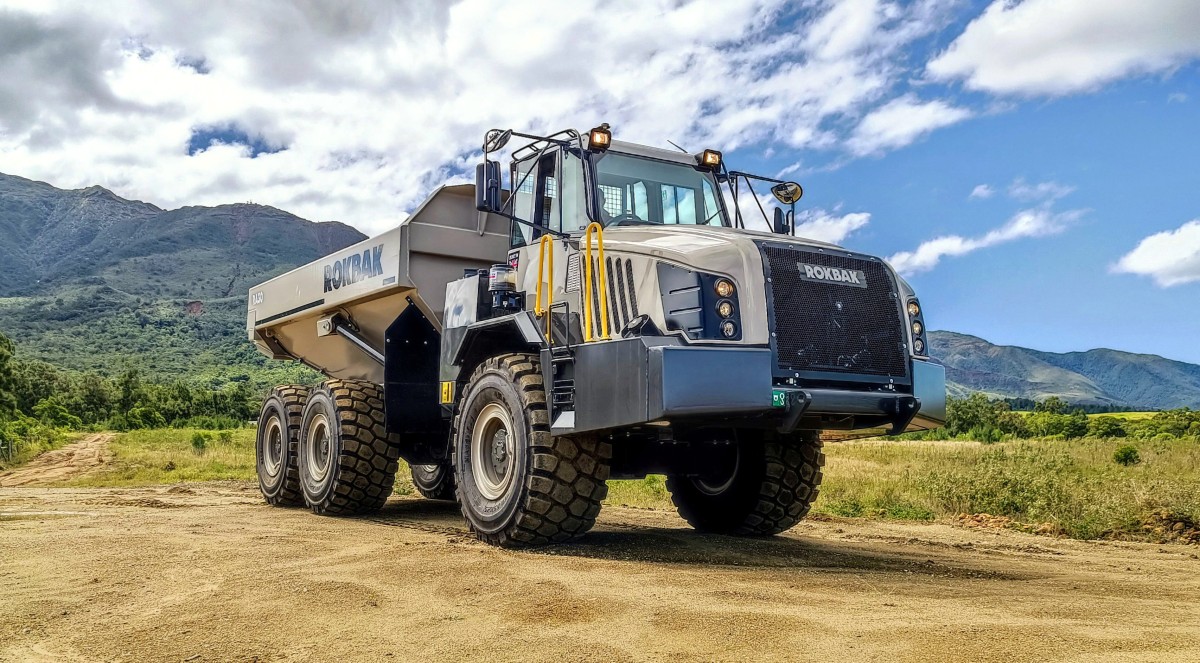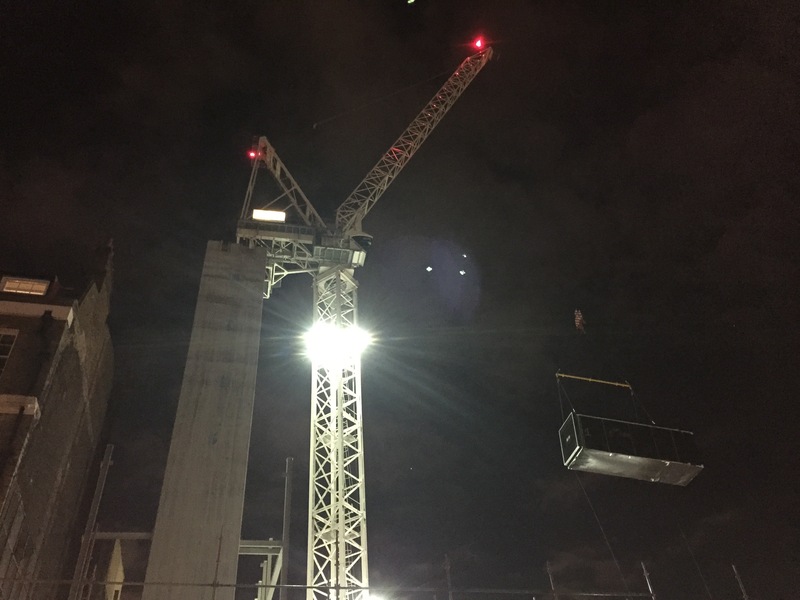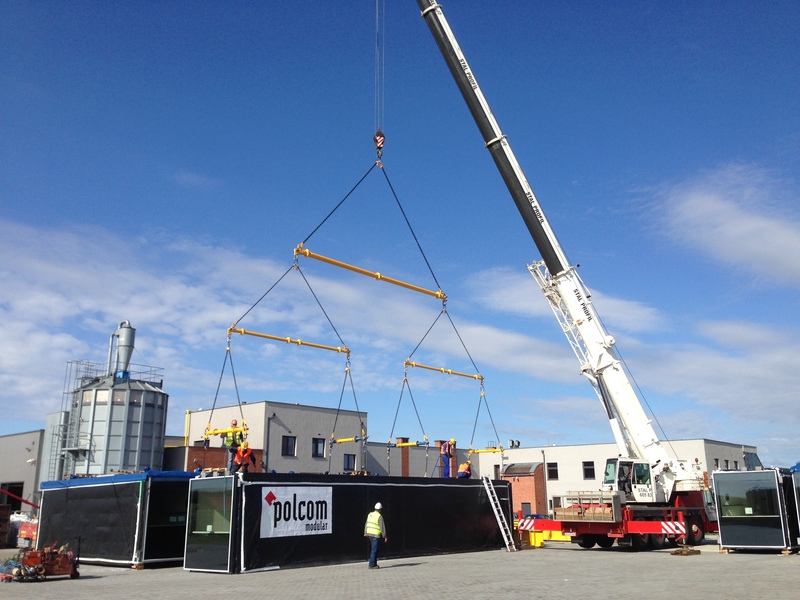Home \ International \ Modulift provides below-the-hook solution for bedroom installations
Modulift provides below-the-hook solution for bedroom installations
14/05/2017
Pubblicato da Redazione
Two pioneers in modular concepts of different kinds combined to install bedrooms at the citizenM Tower of London Hotel, which offer guests views of the River Thames, Tower Bridge and a series of other
Two pioneers in modular concepts of different kinds combined to install bedrooms at the citizenM Tower of London Hotel, which offer guests views of the River Thames, Tower Bridge and a series of other famous landmarks. Below-the-hook equipment manufacturer Modulift, a specialist provider of modular spreader beams, supplied rigging equipment as Polcom Modular installed 260 pre-fabricated structural modular bedrooms at the iconic riverside new-build.
Modular construction is fast becoming a building method of choice for organisations looking for rapid project completion, assured quality standards and minimal impact on the environment or the local area, said Ben Paget, structural director at Polcom. Polcom accepted a scope of work to design, manufacture, supply and install the bedrooms over an 11-week period, all at night. The modules had bespoke designed lifting eyes integrated into the structural framing that were utilised by the rigging team. A bedroom-corridor module weighed approximately 8t, while the heavier bedroom-corridor-bedroom modules were around 12.5t. Modulift provided standard MOD 24 (24t capacity at 5m / 17 ft.) and MOD 50 (50t capacity at 8m / 26 ft.) spreader beams, slings and shackles that were used in either single or one-over-two configuration depending on the lifting points on the modules; some were four-point lifts and others eight-point. Below-the-hook equipment totalled up to 1.25t in weight for each lift.
Polcom utilised a tower crane leased by Balfour Beatty, the major contractor, which was already onsite for other lifts related to the construction project. Paget explained that as the crane was sourced prior to completion of the module design, limited height was available for the top floor bedrooms. He added: “We had to modify the top floor lift with shortened chains and tighter angles to accommodate the final lifts. The module centres of gravity positions were not quite central and we had to manually compensate some of them with sandbags. Modulift’s design service was critical to successful delivery of the project, giving us access to high quality drawings, specifications and expertise, particularly beneficial in offsetting the centre of gravity positions during design of the lifting frames.” During the day, spreader beams and lifting equipment was stored in a purpose-built cage that slotted onto the top of a module, located by the lifting eyes. Polcom moved the cage up each time work started on a new floor level.
Prior to installation the modules were transported from Poland to London Thamesport, a container seaport on the River Medway, where they were placed in storage. Most could be moved under normal transport restrictions but the widest had to be accompanied by special escorts. The entire modular installation crew consisted of between six and 10 people, which included resource for site bolting of the modules as well as rigging and traffic marshalling. Following the success of the project, Polcom has employed Modulift below-the-hook equipment and expertise on further installations in the UK, USA and Canada. Paget said six such projects are taking place at the time of publication.
Ultime notizie di

01/07/2021
The compact Sennebogen 613 E telescopic mobile crane proves its flexibility and safety in the mine
Südwestdeutsche Salzwerke AG welcomed a new Sennebogen 613 E...

07/11/2019
COMANSA presents its new 21LC1400 model
A new large-capacity Flat-Top crane

26/09/2017
Robbins Slurry TBM ramps up for Mumbai Metro Line 3
The first of two Slurry TBMs, a rebuilt 6.65 m (21.8 ft) dia...

23/09/2017
The world’s strongest rope for the German Zugspitzbahn
For walkers and winter visitors, there are two ways to ride...

21/09/2017
Modulift beams suspend full scale model fighter jet
Four Modulift spreader beams were used to suspend a full sca...

20/09/2017
A tunnel project with PSC Crane & Rigging
PSC Crane & Rigging, headquartered in Piqua, Ohio, supplied...
Altri International

International
23/11/2024
GPMat International takes delivery of two Raimondi T147s residential development in the South of France
- Official agent of France expands its product lineup with t...

International
22/11/2024
Sarens acquires additional SCHEUERLE SPMT K24 modules
renowned for its expertise in crane rental services, heavy l...
International
22/11/2024
Five WOLFF cranes modernize Oslo’s Ulven district
With a total of five WOLFF cranes of type 7534.16 Clear, Wol...

International
21/11/2024
Kleemann: New compact crusher used for recycling
Impact crusher MOBIREX MR 100i NEO impresses during operatio...
International
21/11/2024
SITECH partners with Royal Engineers to create poppy and demonstrate tech offering
The demostration involved creating a ground-level poppy desi...

International
20/11/2024
Strong and stable RA30 trucks carry the weight at New Caledonian mine
Three Rokbak RA30 trucks are delivering exceptional durabili...









































